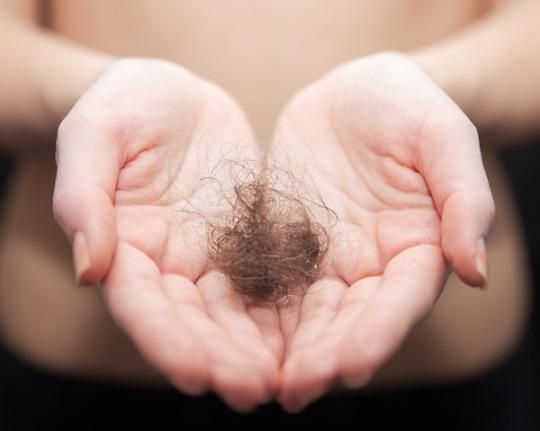If you feel like you’re losing hair, you’re not alone. Lots of women see tufts in the drain or on the bathroom floor and freak out, but experts say that what’s happening is more than likely normal. In fact, the average person loses between 60 to 100 hairs a day, says Anabel Kingsley, a trichologist (a trained scalp expert) with Philip Kingsley. What that can look like varies from person to person; if you have longer strands, it’ll appear that more hair has fallen, while shorter locks can appear to shed less. However, there are certain factors that can cause you to shed more than usual.

Since hair is a non-essential tissue, it’s very sensitive to any stress placed on the body. Short-term blips like a stomach bug, a high fever, a particularly stressful month at the office, or a week-long crash diet often cause excessive shedding even six to 10 weeks later. “The good news is that as long as your system has recovered and you continue to take care of yourself, there’s no cause for concern,” says Kingsley. Your hair will stop falling out on its own and will grow back as usual.
Some women find their hair sheds more in the late summer and less in the winter. If you don’t wash your hair as often—say you limit to once or twice a week cleansings—you’ll notice more fallout that has built up when you do wash. And sometimes it’s just genetic: You could naturally lose closer to 100 hairs a day while your BFF may only shed 60 strands.
While chemical processing like permanent hair color, bleaching, straightening, and relaxing don’t impact natural hair growth, they do damage the hair’s protein structure to some extent, says Kingsley. This in turn weakens the hair shaft and can lead to breakage that looks like hair loss. “Breakage isn’t true ‘hair loss,’ but it can reduce the thickness of your hair if it’s severe,” she says. Try adding biotin hair supplements, washing with a sulfate-free shampoo, and using a deep conditioning hair mask to restore hair health. We like It’s a 10 Miracle Hair Mask ($30, target.com).
And contrary to old wives’ tales, certain hair colors and texture types don’t necessarily shed more or less than others. However, women with thick or curly hair often use heat styling tools and may brush with more tension to work the comb through strands, which can cause the appearance of more shedding that is actually due to more breakage and damage.
When should you be concerned? “If excessive hair shedding continues for longer than three months, seek the advice of a dermatologist or trichologist,” says Kingsley. Chronic hair loss can signify that something isn’t quite right internally. The most common causes of long-term hair loss are deficiencies in iron, vitamin D, and vitamin B12, as well as hypo or hyperthyroid complications. Fixing the underlying problem can help return your hair to its resilient former self.
Fuente: www.yahoo.com
